Recently I have worked with the latest release of Windows Azure and the second Community Technical Preview of System Center 2012 SP1 App Controller. App Controller provides a common self-service experience that can help you easily configure, deploy, and manage virtual machines and services across private and public clouds. And you can get more information about System Center App Controller on Microsoft TechNet.
Now in this blog post I will show you how you can connect your System Center App Controller to Windows Azure. For this I used Windows Server 2012, System Center 2012 SP1 CTP2 of App Controller and Virtual Machine Manager and I also used the latest preview version of Windows Azure. This post also works for the RTM products of System Center 2012, Windows Server 2008 R2, but the screenshots look maybe a little different.
I used:
- System Center 2012 SP1 CTP2 – App Controller
- System Center 2012 SP1 CTP2 – Virtual Machine Manager
- Windows Server 2012 Release Candidate
- Microsoft SQL Server 2012
- Windows Azure Preview
It also works for:
- System Center 2012 – App Controller
- System Center 2012 – Virtual Machine Manager
- Windows Server 2008 R2 SP1
- Microsoft SQL Server 2008 R2 SP1
- Windows Azure
Now here is how you do it:
- Setup a Server for System Center App Controller
- Create a Windows Azure subscription if you don’t have one already
- Install System Center App Controller
- Export the certificate from your App Controller Server
- Import the certificate on your Azure account
- Connect Windows Azure in System Center App Controller
First you have to install System Center App Controller on a machine. If you install the 2012 RTM of App Controller this is just wizard and the installer will configure all IIS requirements for you. If you install System Center 2012 SP1 CTP2 version of App Controller you have to install the IIS requirements by yourself.
This are the features you have to install in the IIS Role.
| Name (for use with the Add-WindowsFeature command in PowerShell) | Display Name (displayed in the wizard in Server Manager) |
| NET-Framework-Features | .NET Framework 3.5 Features |
| NET-Framework-Core | .NET Framework 3.5 (includes .NET 2.0 and 3.0) |
| Web-Mgmt-Console | IIS Management Console (under Web Server (IIS), Management Tools) |
| Web-Static-Content | Static Content (under Web Server (IIS), Web Server, Common HTTP Features) |
| Web-Default-Doc | Default Document (under Web Server (IIS), Web Server, Common HTTP Features) |
| Web-Http-Errors | HTTP Errors (under Web Server (IIS), Web Server, Common HTTP Features) |
| Web-Http-Logging | HTTP Logging (under Web Server (IIS), Web Server, Health and Diagnostics) |
| Web-Request-Monitor | Request Monitor (under Web Server (IIS), Web Server, Health and Diagnostics) |
| Web-Http-Tracing | Tracing (under Web Server (IIS), Web Server, Health and Diagnostics) |
| Web-Stat-Compression | Static Content Compression (under Web Server (IIS), Web Server, Performance) |
| Web-Filtering | Request Filtering (under Web Server (IIS), Web Server, Security) |
| Web-Basic-Auth | Basic Authentication (under Web Server (IIS), Web Server, Security) |
| Web-Windows-Auth | Windows Authentication (under Web Server (IIS), Web Server, Security) |
| Web-ISAPI-Filter | ISAPI Filters (under Web Server (IIS), Web Server, Application Development) |
| Web-ISAPI-Ext | ISAPI Extensions (under Web Server (IIS), Web Server, Application Development) |
| Web-Net-Ext | .NET Extensibility 3.5 (under Web Server (IIS), Web Server, Application Development) |
| Web-Asp-Net45 | ASP.NET 4.5 (under Web Server (IIS), Web Server, Application Development) |
You can use the following PowerShell commands to install all the requirements:
Add-WindowsFeature NET-Framework-Features Add-WindowsFeature NET-Framework-Core Add-WindowsFeature Web-Mgmt-Console Add-WindowsFeature Web-Static-Content Add-WindowsFeature Web-Default-Doc Add-WindowsFeature Web-Http-Errors Add-WindowsFeature Web-Http-Logging Add-WindowsFeature Web-Request-Monitor Add-WindowsFeature Web-Http-Tracing Add-WindowsFeature Web-Stat-Compression Add-WindowsFeature Web-Filtering Add-WindowsFeature Web-Basic-Auth Add-WindowsFeature Web-Windows-Auth Add-WindowsFeature Web-ISAPI-Filter Add-WindowsFeature Web-ISAPI-Ext Add-WindowsFeature Web-Net-Ext Add-WindowsFeature Web-Asp-Net45
After you have installed you need to export the certificate on the App Controller server to add it to your Windows Azure Management Certificates. You have to export the certificate twice, first as DER encrypted binary (.cer ) which you have to import into Windows Azure and once as Personal Information Exchange (.pfx) which you will need in App Controller to connected to Windows Azure.
Export the Certificate
Create .cer file
Add .cer file to Azure Management Certificates in your Windows Azure Management Portal. Note: If you use the new preview Management Portal of Windows Azure you may have to change it back to the “old” Management Portal, because it looks like there is no interface for that at the moment.
Export .pfx file
Set a Password, you will need this again when you connect Azure to App Controller.
Now logon to your System Center App Controller portal and add a new Windows Azure subscription. The Management certificate is the .pfx file which we have exported and the Management certificate password is the password we defined during the export. You can find your Subscription ID on the Windows Azure homepage.
After that you can now use System Center App Controller to manage your Virtual Machines and Services in the Microsoft Public Cloud.,
Tags: App Controller, Azure, Hyper-V, Microsoft, Private Cloud, Public Cloud, SP1, System Center, System Center 2012, Windows Azure, Windows Server 2012 Last modified: June 21, 2012


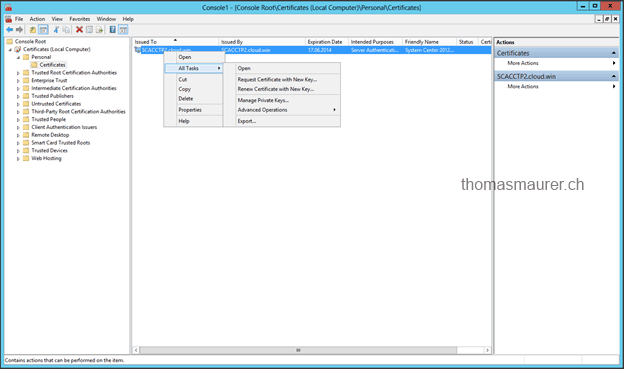
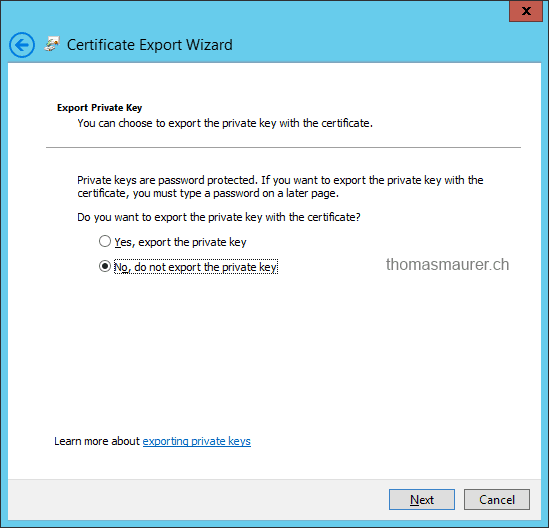
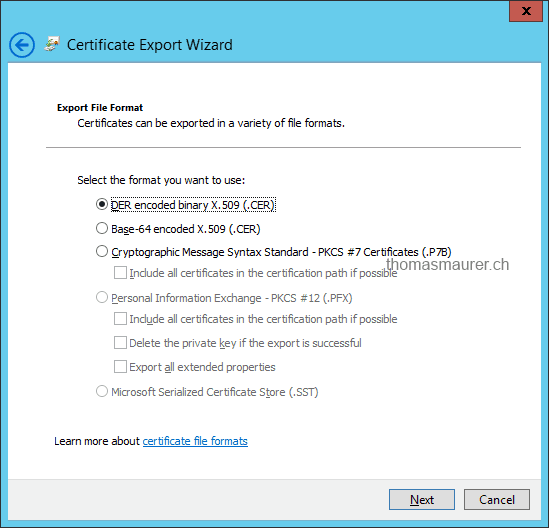
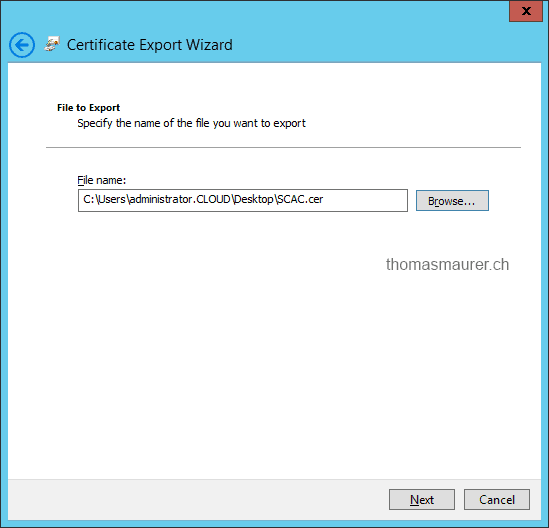
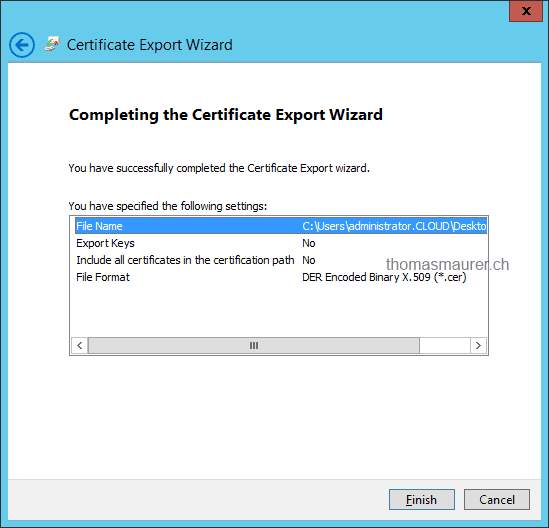
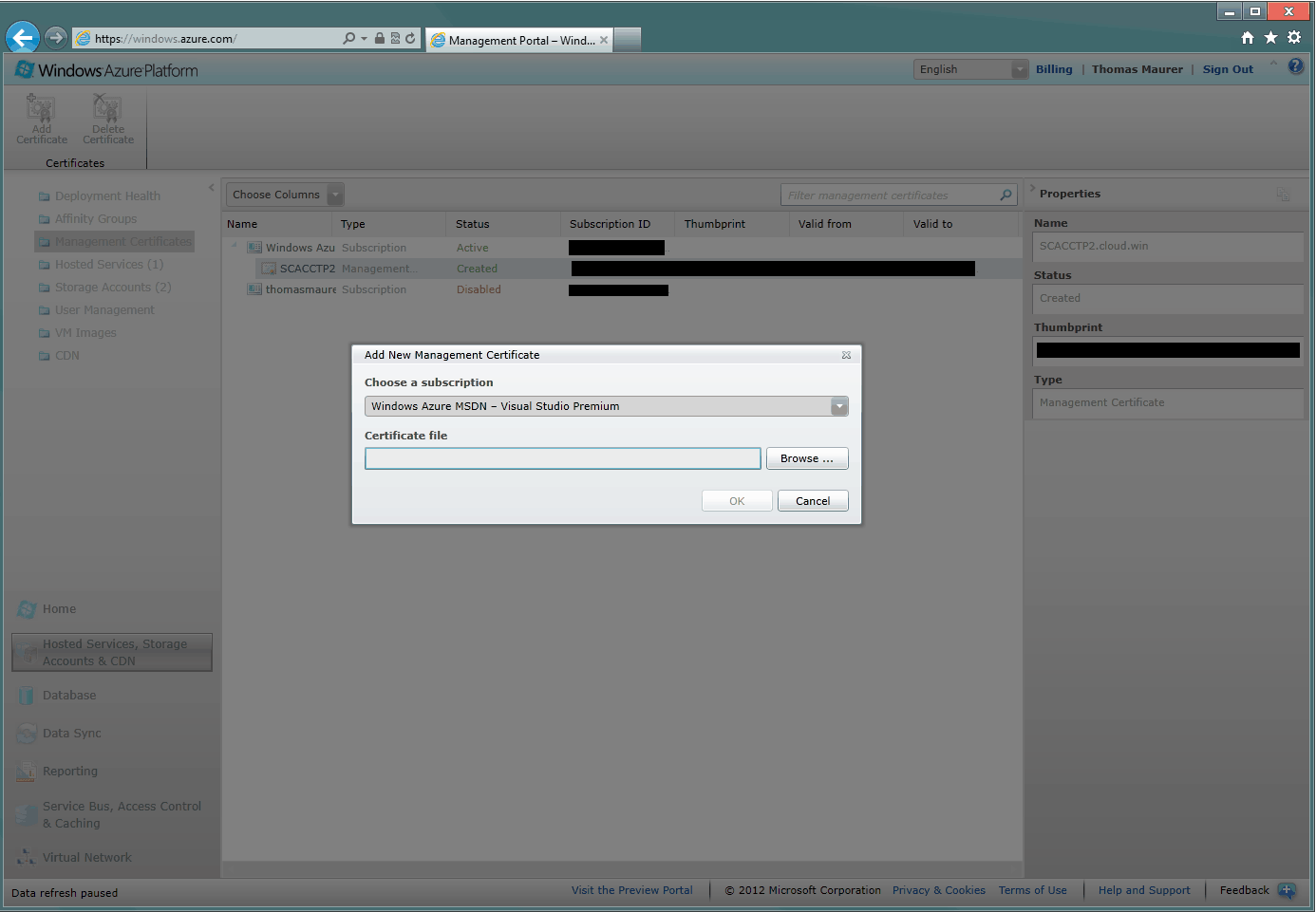
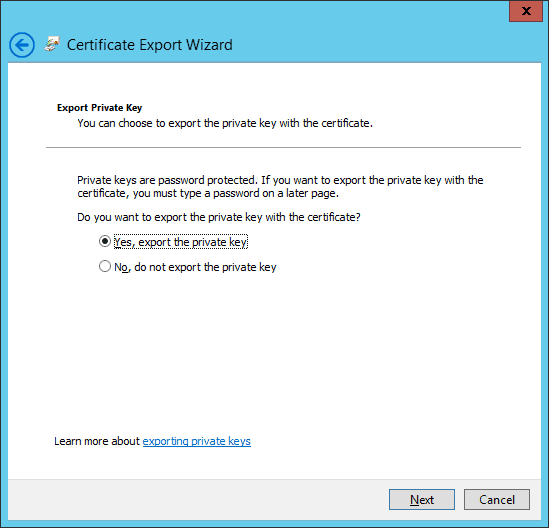
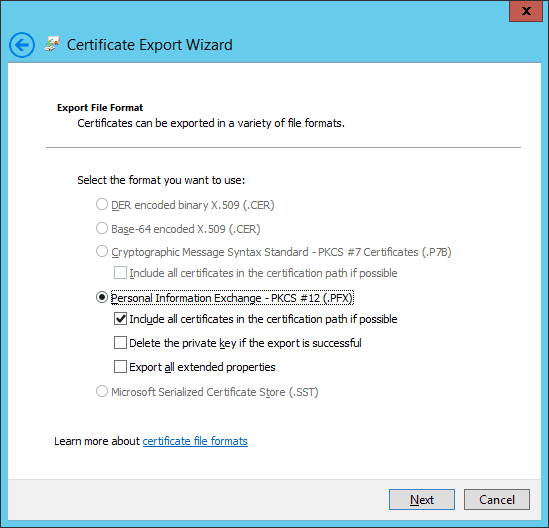
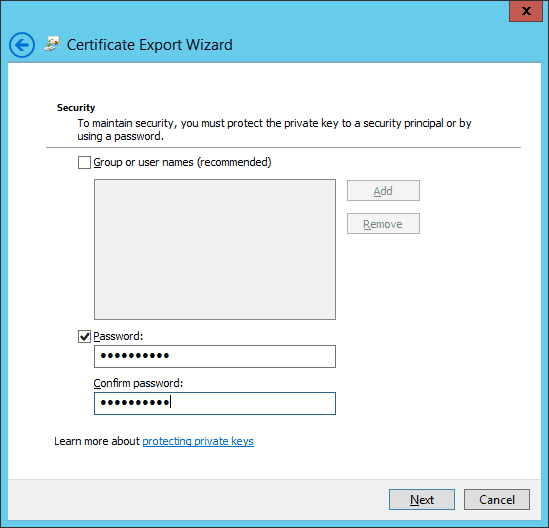
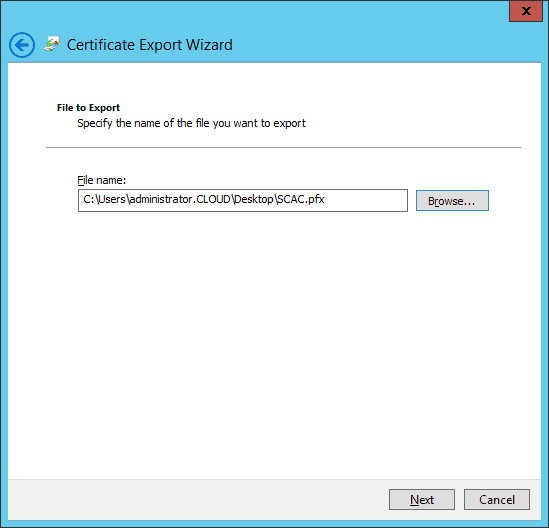
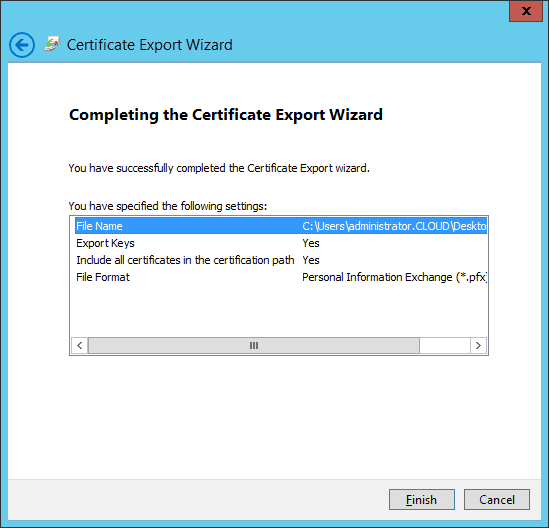
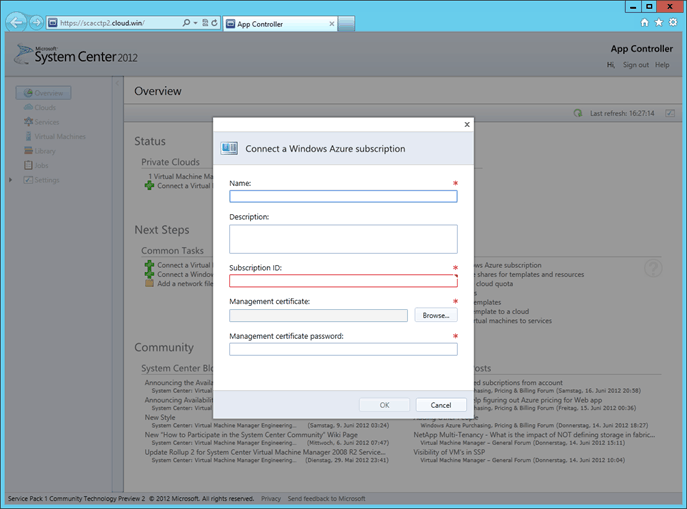
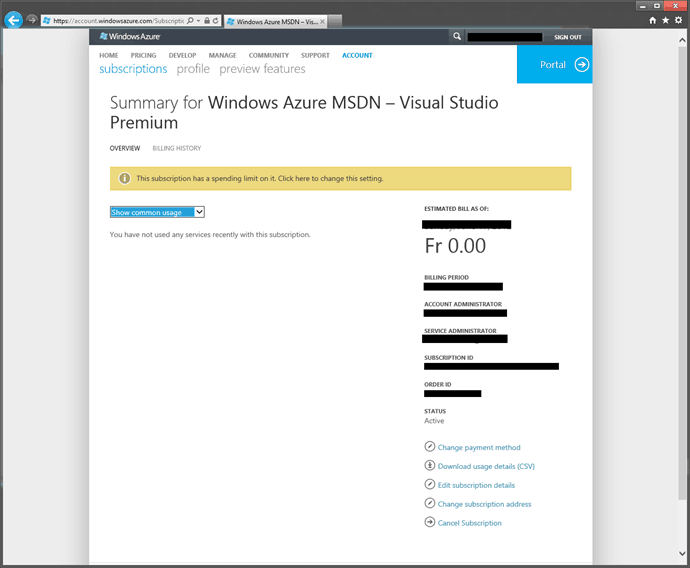









Great article. I have added my azure account to Appcontroller in less than 5 mins.
Good stuff
Thanks for sharing Thomas!